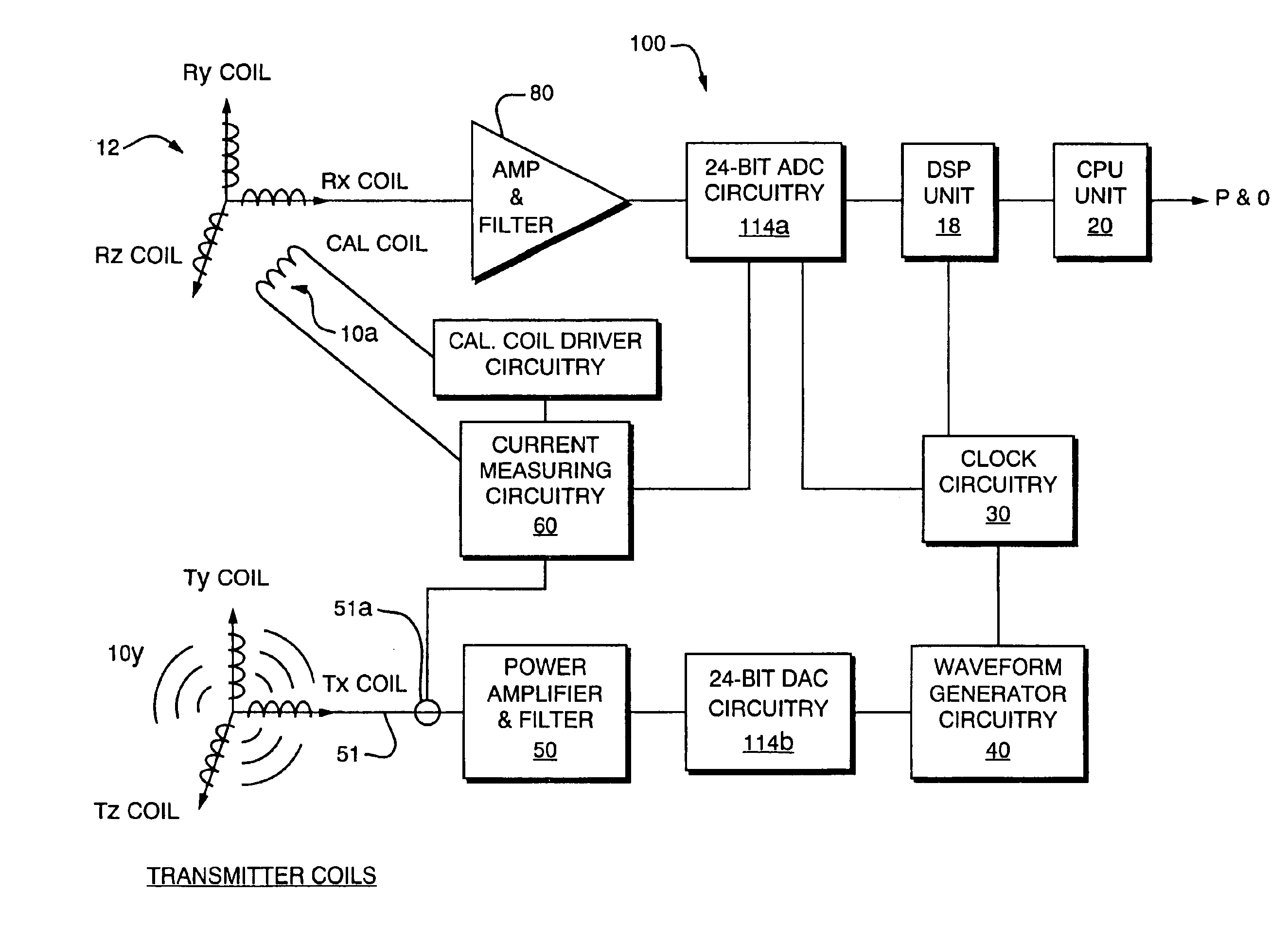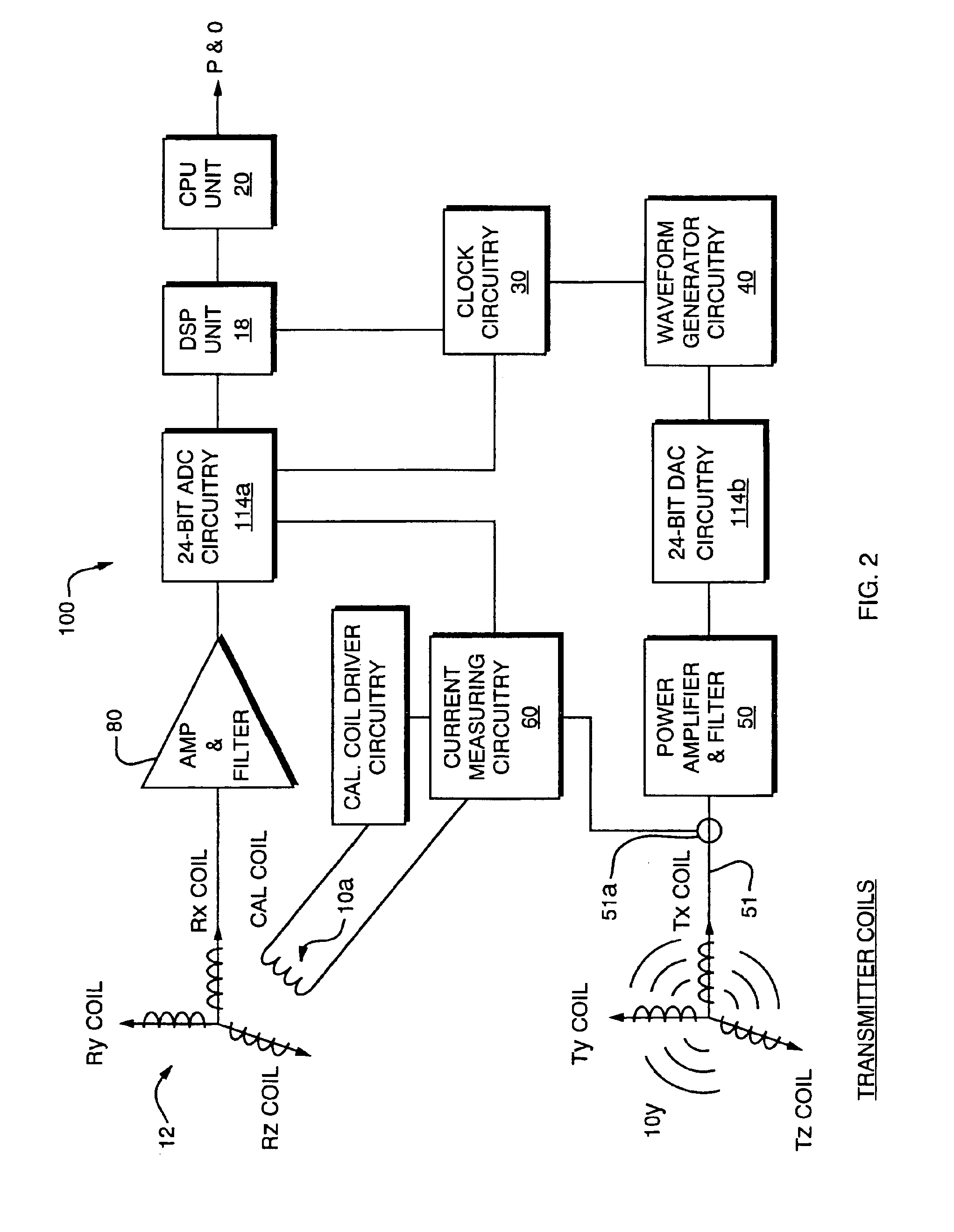Magnetic tracking system
a tracking system and magnetic field technology, applied in the field of magnetic tracking systems, can solve the problems of limiting the attainable field strength or the achievable level of detection signal amplitude, introducing distortions into the expected or calibrated field distribution, and varying magnetic fields induce eddy currents in conductive structures found within the field, so as to enhance the accuracy of tracking determination and enhance the accuracy of p&o determination
- Summary
- Abstract
- Description
- Claims
- Application Information
AI Technical Summary
Benefits of technology
Problems solved by technology
Method used
Image
Examples
Embodiment Construction
[0032]The present invention is an improved electromagnetic tracking system which may, by way of example, be employed in an operating room or clinical setting to determine the position and orientation of an object such as a catheter, surgical tool, marker or the like in relation to other physical structures, or in relation to images that may, for example, have coordinates assigned thereto by other means, such as via coordinatized 3-D image sets, position-defining frames, or correlation with imaged or tracked fiducials or markers. A great number of such systems are known, being described for example in U.S. Pat. No. 5,967,980 and related patents of M. Ferre et al, U.S. Pat. No. 5,307,072, and others, so the features of such systems will not be further described here.
[0033]As relevant to a first aspect of the present invention, an electromagnetic tracking system includes a magnetic field generator and a magnetic field sensor together with signal conditioning circuitry and a processor f...
PUM
 Login to View More
Login to View More Abstract
Description
Claims
Application Information
 Login to View More
Login to View More - R&D
- Intellectual Property
- Life Sciences
- Materials
- Tech Scout
- Unparalleled Data Quality
- Higher Quality Content
- 60% Fewer Hallucinations
Browse by: Latest US Patents, China's latest patents, Technical Efficacy Thesaurus, Application Domain, Technology Topic, Popular Technical Reports.
© 2025 PatSnap. All rights reserved.Legal|Privacy policy|Modern Slavery Act Transparency Statement|Sitemap|About US| Contact US: help@patsnap.com



